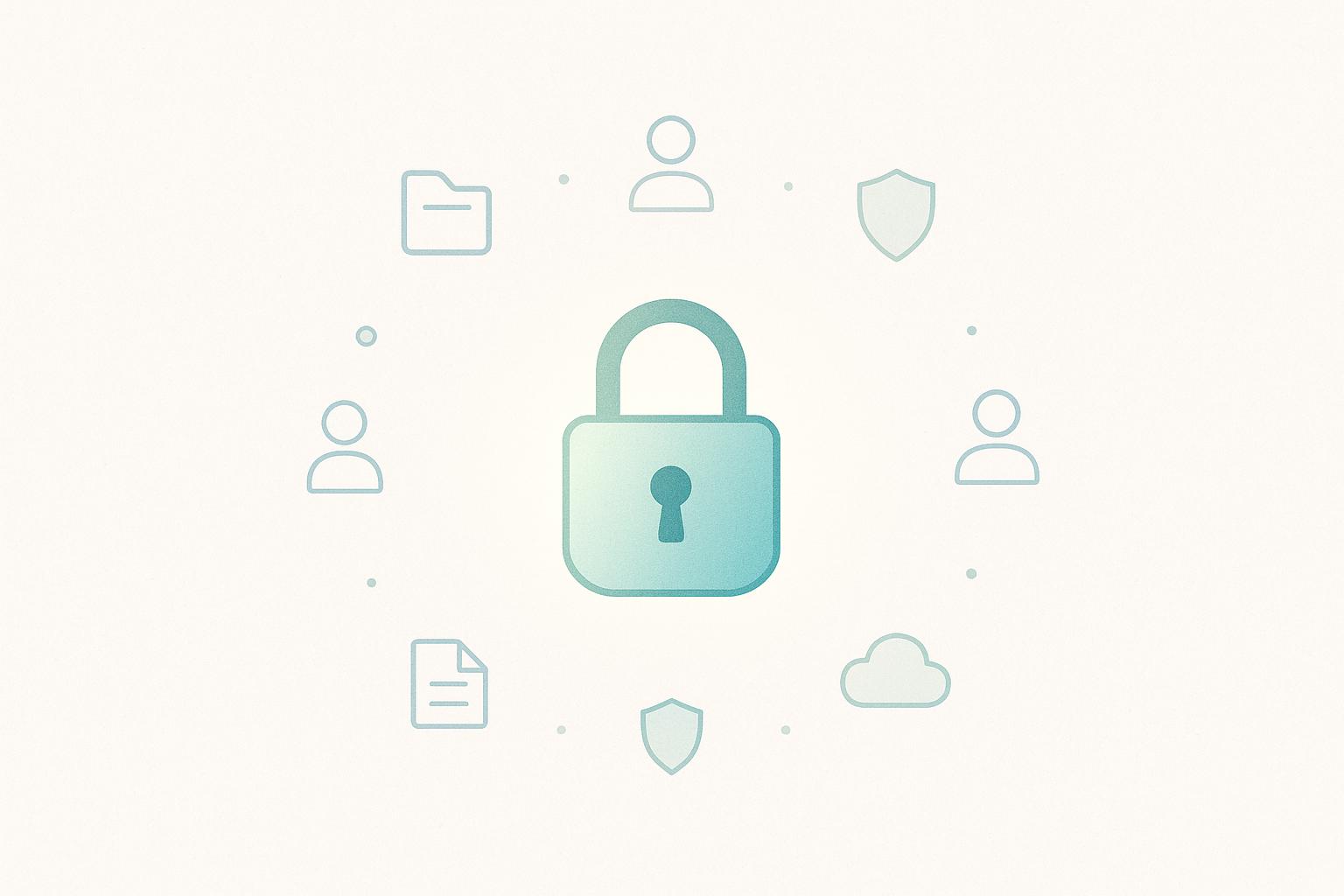Kafka and RabbitMQ are two popular message brokers that enable communication between different applications and services, even if written in different programming languages. Here's a quick comparison:
Kafka
- Distributed streaming platform for handling high-volume, high-velocity data streams
- Designed for real-time data processing, stream processing, and event-driven architectures
- High throughput (millions of messages/second) and low latency
- Horizontal scalability by adding more brokers
- Supports Java, Scala, Python, Go, and C/C++
RabbitMQ
- Flexible message broker supporting multiple messaging patterns (point-to-point, pub-sub, request-response)
- Suitable for message queuing, microservices, and IoT platforms
- Lower throughput (thousands of messages/second) compared to Kafka
- Vertical scalability by adding more resources
- Supports Java, .NET, Python, Ruby, C, and Go
Related video from YouTube
Quick Comparison
FeatureApache KafkaRabbitMQMessaging ModelPublish-subscribePoint-to-point, pub-sub, request-responseData StorageDistributed log, persistentTransient (unless configured)ThroughputHigh (millions of messages/sec)Lower (thousands of messages/sec)ScalabilityHorizontal (add more brokers)Vertical (add more resources)RedundancyReplication across brokersMirrored queues, clusteringLanguage SupportJava, Scala, Python, Go, C/C++Java, .NET, Python, Ruby, C, GoUse CasesReal-time data processing, stream processing, event-driven architectureMessage queuing, microservices, IoT platforms
The choice between Kafka and RabbitMQ depends on your project's specific requirements for throughput, scalability, language support, and use case (real-time data processing vs. message queuing).
Understanding Kafka and RabbitMQ

Apache Kafka and RabbitMQ are two popular message brokers that enable communication between different applications, systems, and services. While they share similar goals, they differ in their architecture, design, and use cases.
What is Apache Kafka?

Apache Kafka is a distributed streaming platform that handles high-volume, high-velocity streams of data in a distributed fashion. It provides low-latency, fault-tolerant, and scalable data processing.
Key FeaturesDescriptionDistributed architectureScalable and fault-tolerantHigh-throughput and low-latencyHandles massive amounts of dataMultiple data formatsSupports JSON, Avro, and ProtobufReal-time data processingEnables real-time analytics capabilities
What is RabbitMQ?
RabbitMQ is a message broker that enables communication between different applications, systems, and services. It provides a flexible and scalable messaging system that can handle high volumes of messages.
Key FeaturesDescriptionMultiple messaging patternsSupports point-to-point, publish-subscribe, and request-responseFlexible routing and queuingEnables efficient message handlingMultiple data formatsSupports JSON, XML, and MessagePackHigh availability and clusteringScalable and fault-tolerant
Both Kafka and RabbitMQ are designed to provide reliable and scalable messaging systems, but they differ in their architecture, design, and use cases. In the next section, we will compare and contrast the key features of Kafka and RabbitMQ.
Kafka vs. RabbitMQ: Key Features
Messaging Models
Kafka and RabbitMQ have different messaging models. Kafka uses a publish-subscribe model, where producers publish messages to topics, and consumers subscribe to these topics to receive messages. This model allows for loose coupling between producers and consumers, making it ideal for large-scale, distributed systems.
RabbitMQ, on the other hand, supports multiple messaging patterns, including point-to-point, publish-subscribe, and request-response.
Data Storage and Throughput
FeatureKafkaRabbitMQStorageLog-based storage systemIn-memory storage (default)ThroughputHigh-throughput processingCan impact throughput and scalability
Kafka's log-based storage system enables long-term data persistence and high-throughput processing. RabbitMQ's in-memory storage can impact throughput and scalability, but it provides options for persistent storage and clustering.
Scalability and Redundancy
Both Kafka and RabbitMQ provide scalability and redundancy features to ensure high availability and fault tolerance.
FeatureKafkaRabbitMQScalabilityPartitioning and replication mechanismsClustering and federation capabilitiesRedundancyHorizontal scaling and node failure handlingSimilar benefits with a different architecture
Language Support and Integration
Kafka and RabbitMQ offer extensive language support and integration capabilities.
LanguageKafkaRabbitMQJavaSupportedSupportedScalaSupportedPythonSupportedSupportedC++SupportedRubySupported.NETSupported
Both message brokers provide APIs and interfaces for seamless integration with various systems and applications, making them suitable for diverse use cases and environments.
Performance Metrics: Kafka vs. RabbitMQ
Message Throughput
Kafka is designed to handle high volumes of messages quickly. It can process millions of messages per second with limited resources. RabbitMQ can also process a large number of messages, but it requires more resources to do so.
Message BrokerTypical ThroughputApache KafkaMillions of messages/secondRabbitMQTens of thousands of messages/second
In general, Kafka is better suited for applications that require processing large volumes of data in real-time.
Message Delivery Latency
Kafka's architecture is designed to minimize latency, making it suitable for real-time data processing and time-sensitive applications. RabbitMQ's latency can vary depending on the configuration and use case. While RabbitMQ offers flexibility in terms of consistency and guarantees, Kafka's design provides an advantage in terms of latency.
Key Takeaways
- Kafka is generally better suited for high-throughput and low-latency applications.
- RabbitMQ can also handle large volumes of messages, but may require more resources to do so.
- The choice between Kafka and RabbitMQ ultimately depends on the specific requirements of your application.
sbb-itb-8abf120
Use Cases for Kafka and RabbitMQ
Kafka and RabbitMQ are both powerful message brokers, but they excel in different scenarios. Understanding the use cases for each broker is crucial in choosing the right tool for your project.
Kafka Use Cases and Adoption
Kafka is ideal for projects that require high-throughput, low-latency, and fault-tolerant data processing. Its ability to handle massive volumes of data makes it a popular choice for:
- Real-time data processing: Kafka's architecture is designed to handle high-velocity data streams, making it suitable for applications that require real-time processing.
- Stream processing: Kafka's stream processing capabilities make it an excellent choice for applications that require continuous data processing.
- Event-driven architecture: Kafka's event-driven architecture makes it an ideal choice for applications that require loosely coupled microservices.
CompanyUse CaseLinkedInReal-time data processingNetflixStream processingUberEvent-driven architecture
RabbitMQ Use Cases and Implementations
RabbitMQ is an excellent choice for projects that require flexible routing, message queuing, and guaranteed message delivery. Its ability to handle complex routing and message queuing makes it a popular choice for:
- Message queuing: RabbitMQ's message queuing capabilities make it an ideal choice for applications that require guaranteed message delivery.
- Microservices architecture: RabbitMQ's flexible routing and message queuing capabilities make it an excellent choice for applications that require communication between microservices.
- IoT platforms: RabbitMQ's ability to handle high volumes of messages and provide flexible routing makes it an ideal choice for IoT platforms.
CompanyUse CaseNASAMessage queuingSiemensMicroservices architectureSoundCloudIoT platforms
By understanding the use cases for Kafka and RabbitMQ, you can choose the right message broker for your project and ensure that your application meets its performance and scalability requirements.
Kafka and RabbitMQ Comparison
Kafka and RabbitMQ are two popular message brokers with different strengths and weaknesses. Here's a comparison of their key features to help you choose the right tool for your project:
Feature Comparison Table
FeatureApache KafkaRabbitMQMessaging ModelDumb broker, smart consumerSmart broker, dumb consumerData StorageDistributed log, persistentTransient, unless configuredMessage OrderingGuaranteed within partitionsGuaranteed within queuesThroughputHigh (millions of messages/sec)Lower (thousands of messages/sec)ScalabilityHorizontal (add more brokers)Vertical (add more resources)RedundancyReplication across brokersMirrored queues, clusteringLanguage SupportJava, Scala, Python, Go, C/C++Java,.NET, Python, Ruby, C, GoProtocolsCustom binary protocolAMQP, MQTT, STOMP, HTTPDelivery GuaranteesAt-least-onceAt-most-once, at-least-onceUse CasesReal-time data processing, stream processing, event-driven architectureMessage queuing, microservices, IoT platforms
This comparison highlights the differences in architecture, performance, and use cases between Kafka and RabbitMQ. By understanding these differences, you can choose the right message broker for your project and ensure it meets its performance and scalability requirements.
Choosing the Right Message Broker
When selecting a message broker, it's crucial to consider your project's specific needs. Both Kafka and RabbitMQ are powerful tools, but they cater to different use cases and requirements. Here are some key factors to consider when choosing between them:
Align Technical Capabilities with Project Needs
Evaluate your project's requirements in terms of throughput, scalability, and reliability. If you need to process large volumes of data in real-time, Kafka might be the better choice. Its distributed architecture and ability to handle high-throughput make it well-suited for stream processing and event-driven architectures.
On the other hand, if you're building a microservices-based system or require flexible routing and reliable message delivery, RabbitMQ might be a better fit. Its smart broker architecture and support for multiple messaging patterns make it an excellent choice for message queuing and IoT platforms.
Consider Language Support and Integration
Think about the programming languages and frameworks you're using in your project. Both Kafka and RabbitMQ offer support for multiple languages, but Kafka has a more extensive range of clients and libraries available. If you're working with Java, Scala, or Python, Kafka might be a more natural choice. However, if you're using .NET, Ruby, or C, RabbitMQ might be a better option.
Evaluate Redundancy and Fault Tolerance
Assess your project's requirements for redundancy and fault tolerance. Kafka's distributed architecture and replication capabilities make it highly resilient to failures, while RabbitMQ's mirrored queues and clustering features provide similar benefits.
FeatureKafkaRabbitMQThroughputHigh (millions of messages/sec)Lower (thousands of messages/sec)ScalabilityHorizontal (add more brokers)Vertical (add more resources)RedundancyReplication across brokersMirrored queues, clusteringLanguage SupportJava, Scala, Python, Go, C/C++Java,.NET, Python, Ruby, C, Go
By carefully evaluating these factors, you can choose the right message broker for your project and ensure it meets its performance and scalability requirements.
FAQs
What is the main difference between Kafka and RabbitMQ?
Kafka and RabbitMQ are both message brokers, but they serve different purposes. Kafka is ideal for handling large volumes of data in real-time, while RabbitMQ excels in low-latency message delivery and complex routing.
Why use Kafka instead of RabbitMQ?
ScenarioKafkaRabbitMQHandling large volumes of data in real-timeIdealNot suitableLow-latency message delivery and complex routingNot idealSuitableProject requires Java, Scala, or PythonMore natural choiceLess natural choice
In summary, Kafka is a better fit for projects that require handling massive amounts of data in real-time, while RabbitMQ is perfect for projects that need low-latency message delivery and complex routing.








